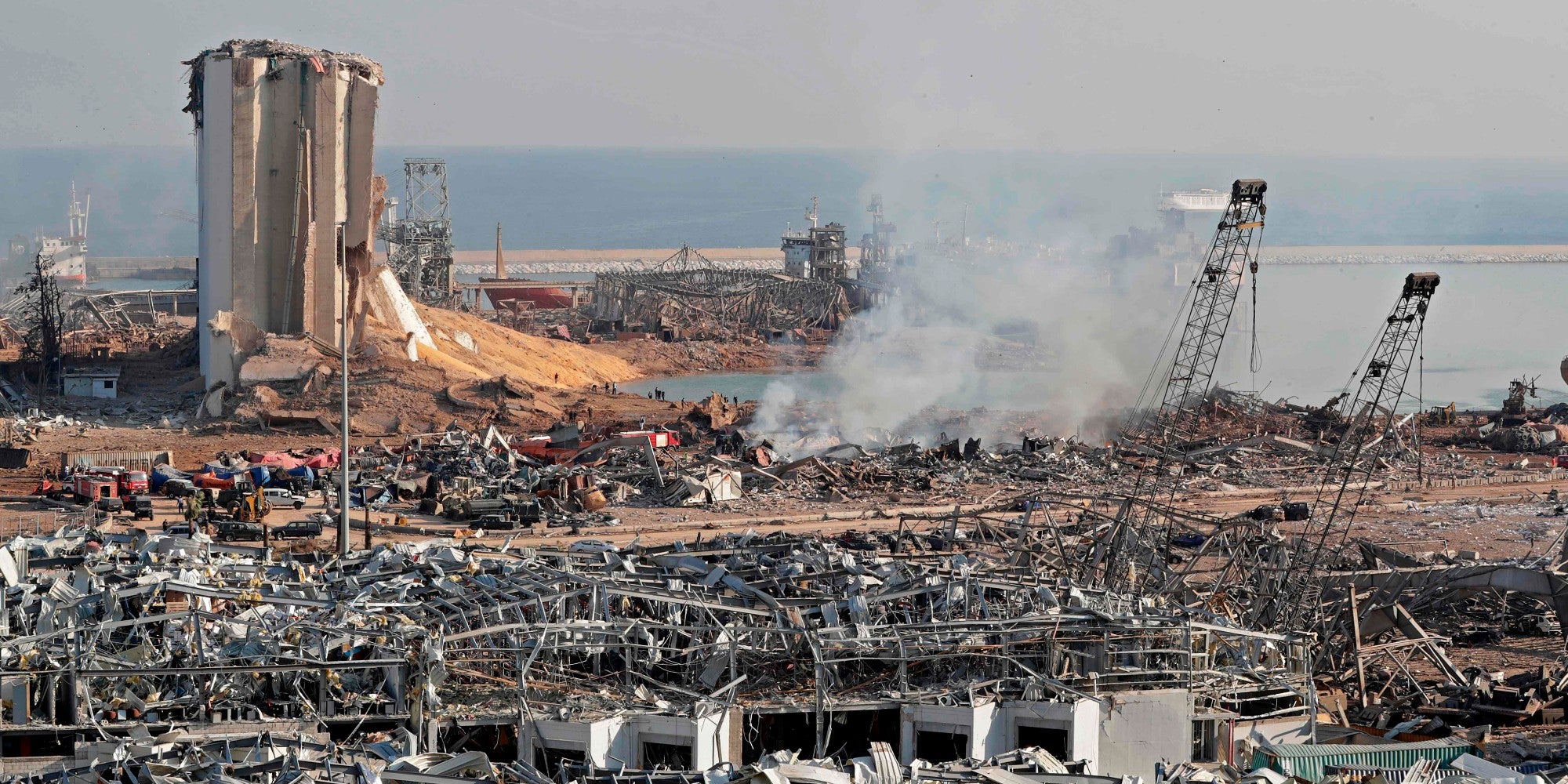Ammonium nitrate: What is the chemical blamed for Beirut explosion, and how could it produce such a powerful blast?
When heated, ammonium nitrate includes all of the components required for a fast-burning fire
Your support helps us to tell the story
From reproductive rights to climate change to Big Tech, The Independent is on the ground when the story is developing. Whether it's investigating the financials of Elon Musk's pro-Trump PAC or producing our latest documentary, 'The A Word', which shines a light on the American women fighting for reproductive rights, we know how important it is to parse out the facts from the messaging.
At such a critical moment in US history, we need reporters on the ground. Your donation allows us to keep sending journalists to speak to both sides of the story.
The Independent is trusted by Americans across the entire political spectrum. And unlike many other quality news outlets, we choose not to lock Americans out of our reporting and analysis with paywalls. We believe quality journalism should be available to everyone, paid for by those who can afford it.
Your support makes all the difference.Ammonium nitrate appears to be the cause of the huge explosion that has left large parts of Beirut ruined and at least 100 people dead.
Some 2,750 tonnes of the material had been stored in a warehouse for six years without proper security measures, according to Lebanese president Michel Aoun.
The scale of the blast – which could be felt as far away as Cyprus – appears similar to other incidents where ammonium nitrate has exploded, experts have said.
But the chemical, which is used as an agricultural fertiliser, is unable to explode on its own. While it is a powerful fuel for explosions, because it includes both the fuel and oxygen required for a fire – and has been used as such in terror attacks – it still needs to be ignited by heat, since it cannot detonate on its own.
Early videos suggest the fireworks could have played that role. Videos show a small initial fire, accompanied by the small sparks and pops of fireworks going off, before the large explosion happens and engulfs the city around it.
That larger blast had all the hallmarks of being caused by ammonium nitrate. After it had cleared, orange clouds could be seen, which are probably toxic nitrogen dioxide gas that is released by explosions that involve nitrates.
The white cloud that came alongside the massive blast and quickly spread through the city appears to be a condensation cloud. Those typically accompany massive explosions in humid conditions, following the shock waves, according to Jeffrey Lewis, a missile expert at the Middlebury Institute of International Studies in Monterey, California.
Ammonium nitrate is typically used for agricultural fertiliser. It is a relatively simple and inexpensive way of providing plants with nitrates.
It is naturally occurring, and comes in the form of a white solid that dissolves in water that is also known as saltpetre. It is mostly made synthetically, in industrial production that allows it to be produced relatively cheaply for agricultural use.
Another legitimate use is in controlled explosions, such as those during mining and civil construction work.
But ammonium nitrate is not explosive in itself, and still needs something specific to ignite it. In its pure state, it is actually relatively hard to ignite, though if it is mixed with something like oil it becomes much more dangerous.
Once it is detonated, however, it produces oxygen, meaning that it can very quickly increase the scale of an existing fire. As such, in many of the intentional and accidental disasters it has caused, it has acted to escalate explosions rather than as the first cause of them.

The particular way that the explosion happened will change the number and types of casualties that will be expected, said David Caldicott, an emergency consultant and senior clinical lecturer in medicine at the Australian National University.
"This explosion can be considered as a ‘high order’ explosion, with an obvious blast wave seen to be propagated from a massive secondary explosion, that followed on from the event," he said.
"Primary injuries are blast-related, as a consequence of the overpressure wave interacting with the hollow space in victims; lung injuries are often survived, but subsequently fatal, and bowel injuries are common.
"Secondary injuries are caused by flying debris; effectively environmental shrapnel.
"Tertiary injuries are as a consequence of being thrown by the blast, and quaternary injuries by other features such as inhalation."
Many famous bombing incidents – including those carried by the IRA in London through the 90s – made use of the explosive powers of fertiliser.
As a result, the chemical is tightly regulated in many countries. Though it cannot be banned as a result of its use in agriculture, both the purchase and storage of ammonium nitrate is governed by tightly-defined health and safety legislation.
Join our commenting forum
Join thought-provoking conversations, follow other Independent readers and see their replies
Comments